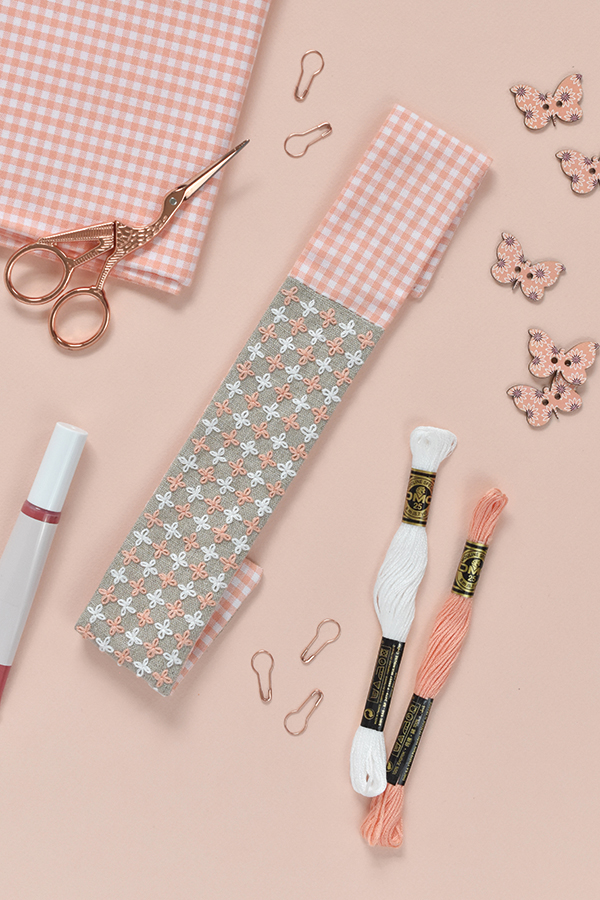You will need
- Gingham fabric: 18 x 18cm (7 x 7in)
- Linen fabric: 18 x 30cm (7 x 12in)
- Elastic: 14cm (5 ½in) x 2cm (¾in) wide
- Embroidery needle
- Stranded cotton in white and a coordinating colour
- Matching thread
- Basic sewing kit
- A template: download the Simply Sewing issue 58 templates for this template
Note
Use a 6mm (¼in) seam allowance unless otherwise stated.

